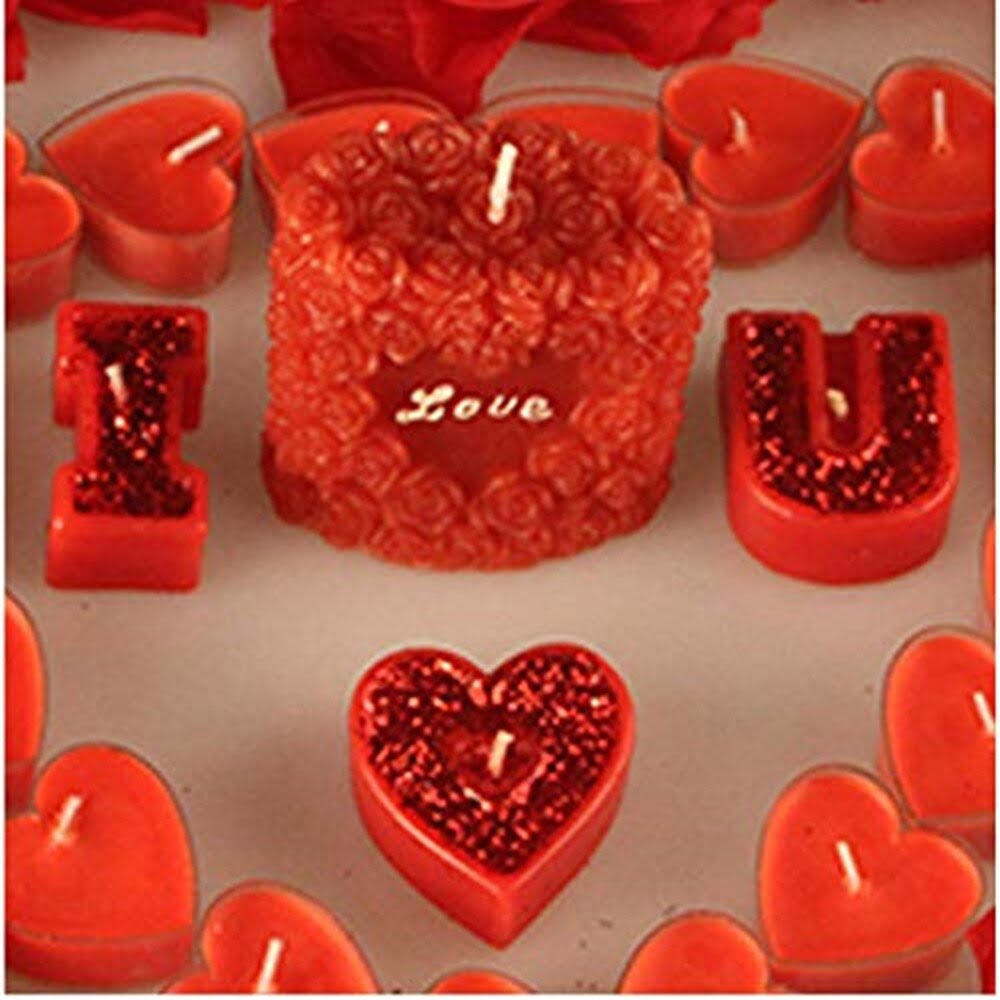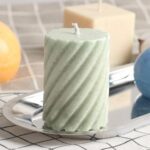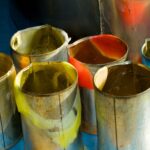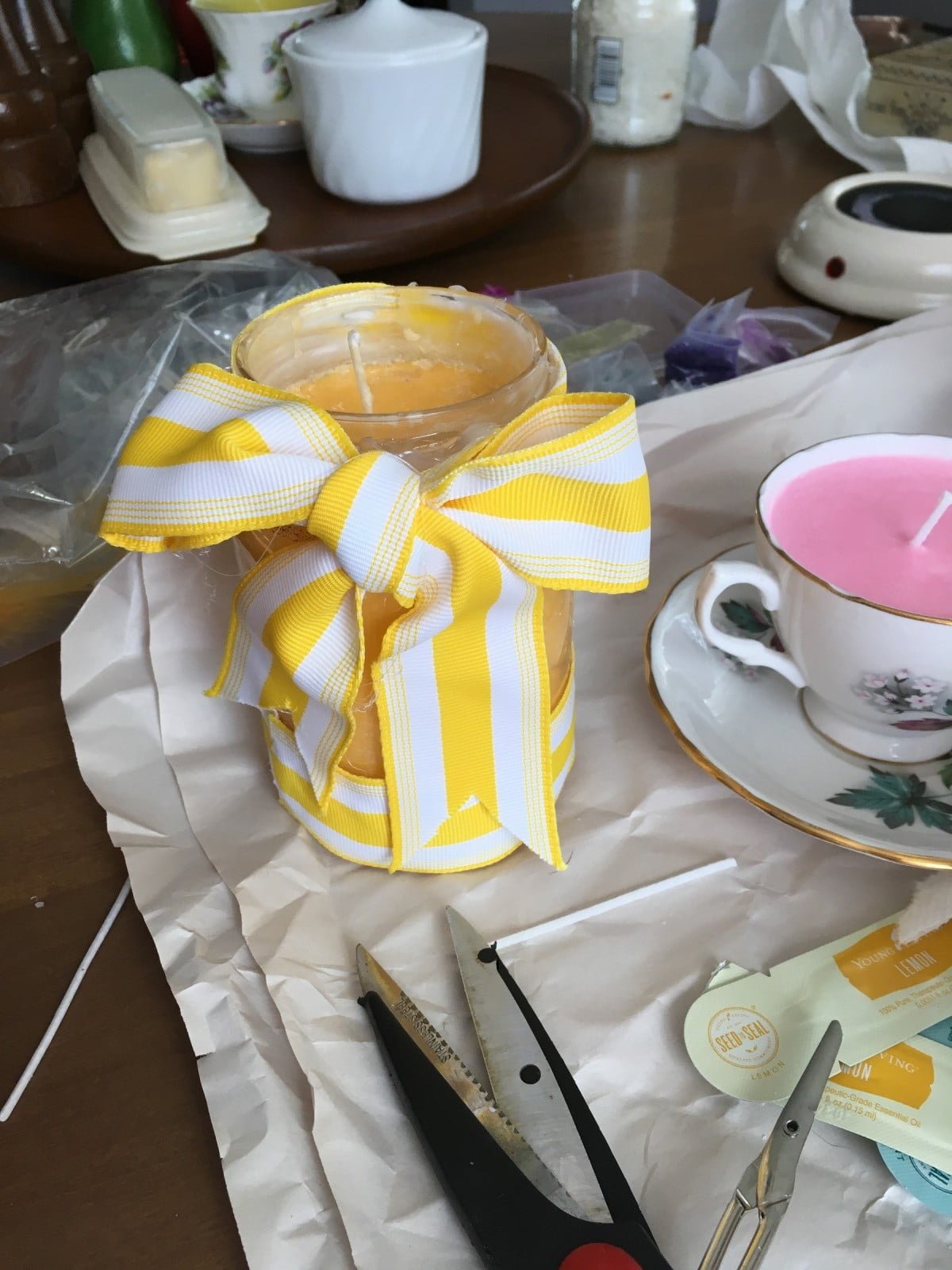Beeswax candles have long been treasured for their natural beauty, warm glow, and enchanting aroma. Whether you’re a seasoned candle maker or a beginner looking to explore the art of crafting your own candles, learning how to prepare beeswax is an essential skill.
In this article, we will dive into the process of preparing beeswax for candle making, from understanding its composition and benefits to gathering the necessary supplies and achieving the perfect consistency. With our step-by-step guide, expert tips and tricks, and troubleshooting advice, you’ll be well-equipped to embrace the art of beeswax candle making and create stunning creations that will enhance any space.
Beeswax holds a special place in candle making due to its many unique qualities. Composed of natural compounds secreted by honeybees, it not only burns longer than other waxes but also emits a soothing, natural fragrance that adds a touch of elegance to any room.
Additionally, beeswax candles have been known to purify the air by releasing negative ions that can help remove dust, pollen, and other allergens from your environment. By preparing your own beeswax for candle making, you have complete control over the ingredients used and can enjoy all these benefits while indulging in a creative and fulfilling endeavor.
Before diving into the specifics of preparing beeswax for candle making, it’s important to gather all the necessary tools and supplies. From double boilers or melting pots to strainers and filtration material, having everything at your fingertips will ensure a smooth process from start to finish.
Once you are fully equipped with your beekeeping gloves and apron ready, it’s time to follow our step-by-step guide on cleaning and filtering raw beeswax. By carefully removing impurities such as dirt, propolis, or leftover bits of honeycomb from your wax, you will create a pure base that guarantees optimal burning performance in your finished candles.
Embark on a journey of creativity, craftsmanship, and natural beauty as you learn how to prepare beeswax for candle making. With our comprehensive guide covering everything from composition and benefits to sourcing and troubleshooting, you will gain the knowledge and confidence needed to create exquisite beeswax candles that will adorn your home or delight others as unique gifts. So, gather your supplies, don your apron, and embrace the art of beeswax candle making.
Understanding Beeswax
Beeswax is an incredible natural material that has been used for centuries in various applications, including candle making. Understanding the composition, benefits, and sourcing of beeswax is essential for anyone interested in preparing beeswax for candle making.
Composition of Beeswax
Beeswax is a substance secreted by worker bees to construct their honeycombs. It is made up of a complex mixture of long-chain fatty acids, hydrocarbons, and esters. The specific composition can vary depending on factors such as the bee species, region, and diet.
One of the key components of beeswax is its high melting point. It typically melts between 144 and 147 degrees Fahrenheit (62-64 degrees Celsius). This property makes it ideal for candle making as it provides a slow, clean burn with minimal dripping.
Benefits of Beeswax Candles
Beeswax candles offer numerous benefits compared to other types of candles. When burned, they release negative ions into the air, which can help purify and cleanse the atmosphere by neutralizing airborne pollutants and allergens. This makes them particularly beneficial for individuals with respiratory issues or allergies.
Furthermore, beeswax candles are known for their pleasant natural scent when burned. Unlike synthetic fragrances found in many commercial candles, beeswax emits a subtle honey-like aroma that adds warmth and ambiance to any space.
Sourcing Beeswax
When sourcing beeswax for candle making, it’s important to obtain high-quality wax. The best option is to buy directly from local beekeepers or reputable suppliers who prioritize sustainable and ethical practices. By purchasing from these sources, you can ensure that the wax is pure and free from additives or chemicals.
In addition to buying ready-made wax blocks or sheets, some candle makers choose to collect their own raw beeswax. This can be done by harvesting it from old honeycombs or even using cappings, which are the wax seals that bees create to cover honey cells. However, it’s crucial to remember that collecting and cleaning raw beeswax requires careful processing to remove impurities.
Understanding the composition, benefits, and sourcing of beeswax is essential knowledge for candle makers. By familiarizing yourself with these aspects, you can make informed decisions about the type of wax you use and enjoy all the incredible qualities that beeswax candles have to offer.
Gathering the Tools
Before embarking on the process of preparing beeswax for candle making, it is crucial to have all the necessary tools and supplies on hand. Gathering these essential items in advance will ensure a smooth and efficient preparation process. Here are some must-have supplies to gather before getting started:
First and foremost, you will need a heat source for melting the beeswax. A double boiler or a dedicated wax melter is highly recommended to provide even heat distribution and prevent scorching. Avoid using direct heat sources such as stovetops, as they may cause the wax to overheat or catch fire.
Next, you will need a thermometer specifically designed for candle making. This will help you monitor and control the temperature of the melted beeswax accurately. Maintaining the correct temperature throughout the preparation process is vital for achieving the perfect consistency and preventing any safety hazards.
Another essential tool is a filtering system or strainer to remove impurities from the raw beeswax. This can be done using cheesecloth, nylon stockings, or specially designed filters made for candle making. The filtering process helps eliminate debris, pollen, and other unwanted particles that may affect both the appearance and quality of your candles.
Additionally, having a variety of molds or containers specifically designed for candle-making purposes is necessary. These can range from traditional jar molds to novelty-shaped molds depending on your personal preference and creative vision. Remember to choose molds made of materials suitable for use with hot wax to avoid any damage.
Lastly, don’t forget about wick holders or sustainers along with pre-waxed wicks. These are indispensable when it comes to providing stability and proper positioning of the wick during pouring and setting stages. Choosing wicks appropriate for beeswax candles ensures optimal burn performance while enhancing safety.
By gathering these essential supplies beforehand, you can streamline your preparation process and focus solely on the art of creating beautiful beeswax candles. Each tool plays a crucial role in ensuring the quality, consistency, and overall success of your finished product. With everything at your fingertips, you’ll be ready to dive into the next step: cleaning and filtering raw beeswax.
Step-by-Step Guide
Gather the Necessary Supplies
Before starting the process of cleaning and filtering raw beeswax for candle making, it is important to gather all the necessary supplies. Here are the essential items you will need:
- Raw Beeswax: Start with high-quality raw beeswax from a reliable source. It is important to ensure that the beeswax is free from impurities and contaminants.
- Double Boiler or Melting Pot: A double boiler is highly recommended to melt the beeswax safely and evenly. If you don’t have a double boiler, you can use a stainless-steel melting pot placed in a larger pot filled with water.
- Fine-Mesh Strainer or Cheesecloth: This will be used to filter out any debris or impurities present in the raw beeswax. A fine-mesh strainer or cheesecloth will help achieve a smooth and clean final result.
- Large Heatproof Container: Choose a heatproof container to collect and pour melted beeswax into molds. Make sure it has enough capacity to hold the desired amount of beeswax for your candle making project.
Cleaning the Raw Beeswax
Now that you have gathered all the necessary supplies, it’s time to clean the raw beeswax before using it for candle making. Follow these step-by-step instructions:
- Break down the Beeswax: If your raw beeswax comes in large chunks or blocks, break it down into smaller pieces using a sharp knife or grater. This will help in melting it faster and more evenly.
- Melt the Beeswax: Place your double boiler or melting pot on low heat and add the broken-down pieces of raw beeswax into it. Stir occasionally until completely melted.
- Filtering Out Impurities: Once melted, remove any impurities by pouring the melted beeswax through a fine-mesh strainer or a cheesecloth-lined funnel into the heatproof container. This will help remove any debris, honey, or other impurities present in the raw beeswax.
- Cooling and Setting: Allow the filtered beeswax to cool and solidify in the heatproof container. This may take several hours or overnight, depending on the amount of beeswax.
- Removing Settled Impurities: After the beeswax has completely cooled and solidified, carefully lift it out of the container in one piece. Scrape off any settled impurities from the bottom using a clean knife or scraper.
By following these steps, you can ensure that your raw beeswax is cleaned and filtered properly, resulting in a high-quality material for your candle making endeavors.
Melting and Temperatures
When it comes to preparing beeswax for candle making, achieving the perfect consistency is essential. This section will guide you through the process of melting your beeswax and ensuring that you have the right temperatures for successful candle making.
To begin, you will need a double boiler or a makeshift one using a heatproof container placed in a pot of simmering water. This indirect heating method prevents the beeswax from scorching or overheating. Start by chopping or grating your raw beeswax into smaller chunks, as this will allow for faster melting.
The recommended temperature for melting beeswax is around 145-150°F (63-66°C). Be careful not to exceed this temperature, as overheating can result in discoloration and the loss of its natural qualities. Use a candy thermometer or any other reliable kitchen thermometer to monitor the temperature throughout the melting process.
Once your beeswax has melted completely, it is time to achieve the desired consistency for your candles. The optimal temperature for pouring beeswax into candle molds is between 125-135°F (52-57°C). At this temperature range, the wax will be in a semi-solid state but still fluid enough to fill molds evenly without trapping air bubbles.
In order to maintain this ideal pouring temperature, you may need to keep reheating your melted wax gently if it starts to cool down too quickly. A candle maker’s pouring pitcher with a spout can make this task easier by allowing precise control over where the wax goes when transferring it into molds. Be cautious not to pour wax that is too hot, as it can cause cracking or warping in your finished candles.
Remember, achieving the perfect consistency is key to creating high-quality beeswax candles that burn evenly and have a long-lasting glow. By understanding and controlling the melting temperatures of beeswax, you will enhance your candle making experience and ensure the best results.
| Melting and Temperatures: Achieving the Perfect Consistency |
|---|
| – Recommended melting temperature: approximately 145-150°F (63-66°C) |
| – Optimal pouring temperature: between 125-135°F (52-57°C) |
Scenting Your Candles
Adding fragrance to your beeswax candles can enhance the overall sensory experience and create a pleasant ambiance in your space. Whether you want your candles to have a subtle scent or a more pronounced aroma, there are various methods and options for scenting your beeswax candles.
One popular method is to use essential oils, which are highly concentrated plant extracts known for their aromatic properties. When using essential oils, it’s important to choose high-quality oils that are specifically made for candle making. Avoid using low-quality oils intended for diffusers or skin care, as they may not blend well with the wax and might not produce a desirable scent.
To scent your beeswax candles with essential oils, you can add them directly to the melted wax before pouring it into the molds or containers. The general guideline is to use about 1 ounce of essential oil per pound of beeswax. However, it’s always best to start with a smaller amount and add more gradually if necessary, as some fragrances can be quite strong.
Another option for adding fragrance is to infuse herbs or spices into your melted beeswax. This method not only imparts a subtle scent but also adds visual interest to your candles. Popular choices for infusions include lavender buds, rose petals, cinnamon sticks, and cloves. To do this, simply place your desired herbs or spices in a heat-safe container and pour melted beeswax over them. Allow the mixture to sit for several hours or overnight before straining out the solids.
When experimenting with different fragrances in your beeswax candles, it’s important to keep track of the combinations used so that you can recreate successful scents in the future. Additionally, always test any new fragrance beforehand on a small sample of wax to ensure that you like the end result.
By incorporating fragrance into your beeswax candles, you can create a truly personalized and captivating experience that not only brightens your space but also delights your senses. So, get creative and enjoy exploring the wonderful world of scents in your candle-making journey.
Coloring Options
When it comes to creating beeswax candles, one of the most exciting aspects is choosing the color that will enhance the aesthetic appeal of your finished product. While beeswax candles are beautiful in their natural creamy hue, adding color can bring a whole new dimension to your creations. With various coloring options available, you have the freedom to experiment and create candles that reflect your personal style and taste.
One popular method of coloring beeswax candles is using liquid dyes specifically made for candle making. These dyes come in a wide range of vibrant colors and are easy to mix into melted beeswax. Simply add a few drops of the dye to your melted wax and stir thoroughly until the color is evenly distributed. Keep in mind that a little goes a long way with liquid dyes, so start with a small amount and add more if desired.
Another coloring option is using natural ingredients that not only add color but also enhance the scent and health benefits of your candles. For example, dried flowers or herbs can be infused into hot beeswax to create beautiful natural hues. You can experiment with different plants such as lavender for purple shades or rose petals for delicate pinks. Alternatively, you can try adding spices like turmeric or cinnamon for warm earthy tones.
If you prefer a more rustic look, consider using crayons as an inexpensive coloring option. Be sure to choose non-toxic crayons made from natural waxes without additives or chemicals. Simply grate the crayon into fine shavings and mix them into your melted beeswax until the desired color is achieved.
In summary, when it comes to coloring options for beeswax candles, you have various choices available depending on the look and feel you want to achieve. Whether you opt for liquid dyes for vibrant colors, natural ingredients for subtle hues and added benefits, or crayons for a rustic touch, coloring your beeswax candles can truly elevate their aesthetic appeal and make them unique to your personal style.
So, don’t be afraid to get creative and experiment with different colors to create beautiful works of art.
| Coloring Options | Description |
|---|---|
| Liquid Dyes | Vibrant colors specifically made for candle making that are easy to mix. |
| Natural Ingredients | Dried flowers, herbs, or spices that add color and enhance scent and health benefits. |
| Crayons | Inexpensive option where non-toxic crayons are grated into fine shavings and mixed with melted beeswax. |
Tips and Tricks
Preparing beeswax for candle making can be a rewarding and enjoyable process. To help you achieve the best results, here are some expert tips and tricks that will ensure your candles turn out beautifully.
Use High-Quality Beeswax
Not all beeswax is created equal. It’s important to use high-quality beeswax for optimal results. Look for beeswax that is free from impurities, such as dirt or debris, and has a pleasant scent. Beeswax sourced from local beekeepers or trusted suppliers is often the best choice.
Preheat Your Tools
Before you begin working with your beeswax, it’s a good idea to preheat your tools. This includes tools such as your double boiler or melting pot, thermometer, and molds or containers. Preheating helps the beeswax melt more smoothly and prevents any issues with temperature fluctuations during the process.
Watch the Temperature
Temperature control is crucial when preparing beeswax for candle making. It’s recommended to melt your beeswax at a temperature between 145-150 degrees Fahrenheit (63-66 degrees Celsius). Going above this temperature can cause discoloration or affect the scent of the wax.
Stir Slowly and Gently
When stirring your melted beeswax, it’s important to do so slowly and gently to avoid introducing air bubbles into the wax. Air bubbles can affect the appearance of your finished candles by creating uneven surfaces or holes. Use a gentle circular motion when stirring to keep the wax smooth and consistent.
Store Your Beeswax Properly
To maintain the quality of your beeswax over time, proper storage is essential. Store your prepared beeswax in a cool, dry place away from direct sunlight or heat. Beeswax can absorb odors easily, so it’s best to keep it in an airtight container or wrap it in wax paper to protect it from any unwanted scents.
By following these expert tips and tricks, you’ll be well on your way to preparing beeswax for candle making like a pro. Remember that practice makes perfect, so don’t be afraid to experiment and find the techniques that work best for you. Enjoy the process and embrace the art of beeswax candle making.
Troubleshooting
Candle making can be a delightful and rewarding hobby, but like any craft, it comes with its fair share of challenges. In this section, we will explore some common problems that arise during the beeswax candle-making process and provide solutions to help you overcome them.
- Uneven Burning: One of the most frustrating issues that candlemakers encounter is uneven burning. If your beeswax candles are tunneling or burning only in the center, there are a few possible causes. Firstly, make sure you trim the wick to an appropriate length before lighting the candle.
A wick that is too long can result in an uneven burn. Additionally, consider the size of the container you are using for your candle – a container that is too narrow may cause tunneling. To prevent this problem, choose containers with a wider diameter or opt for pillar-style candles. - Cracking or Sinking: Another common problem with beeswax candles is cracking or sinking during cooling. This issue often occurs when the wax cools too quickly or when there are temperature fluctuations during the cooling process. To avoid this problem, it is essential to cool your candles slowly and evenly after pouring them into molds or containers. You can achieve this by placing your candles in a cool room away from drafts and sudden temperature changes.
- Smoky Flame: If your beeswax candle produces a smoky flame while burning, there are typically two culprits: improper wick size or excessive draft. Using a wick that is too large for your candle can result in an oversized flame that produces smoke.
Moreover, if your candle is placed near an open window or fan, it may be exposed to drafts that disrupt the airflow around the flame and cause smokiness. To resolve these issues, ensure that you select an appropriate wick size for your candle’s diameter and burn it in a draft-free area.
By being aware of these common problems and their solutions, you can troubleshoot your candle-making process with ease. Remember that practice makes perfect, and don’t be discouraged if you encounter obstacles along the way. Candle making is a skill that improves with experience, so embrace the learning process and enjoy the art of beeswax candle making.
Conclusion
In conclusion, beeswax candle making is a beautiful and fulfilling art that allows you to create unique and natural candles. Throughout this article, we have explored the composition, benefits, and sourcing of beeswax, as well as the essential supplies needed for preparation. We have also provided a step-by-step guide on cleaning and filtering raw beeswax, achieving the perfect melting temperatures, adding fragrance and color, and expert advice for troubleshooting common problems.
By embracing the art of beeswax candle making, you not only get to enjoy the warm glow and soothing aroma of your handmade candles but also contribute to a sustainable and eco-friendly lifestyle. Beeswax candles are renowned for their clean-burning properties, emitting negative ions that can purify the air in your home.
Furthermore, preparing beeswax candles offers a creative outlet where you can experiment with different scents and colors to create personalized gifts or decorations. Whether you choose to keep them for yourself or share them with loved ones, these handcrafted candles will undoubtedly bring joy and warmth to any space.
So why not embark on this exciting journey? Gather your tools, source high-quality beeswax from trusted suppliers, follow our step-by-step guide diligently, and let your imagination run wild with various scent combinations and color options. Embrace the art of beeswax candle making and experience the satisfaction of creating your own unique pieces while enjoying the many benefits it brings to both body and mind.

Welcome to my candle making blog! In this blog, I will be sharing my tips and tricks for making candles. I will also be sharing some of my favorite recipes.





